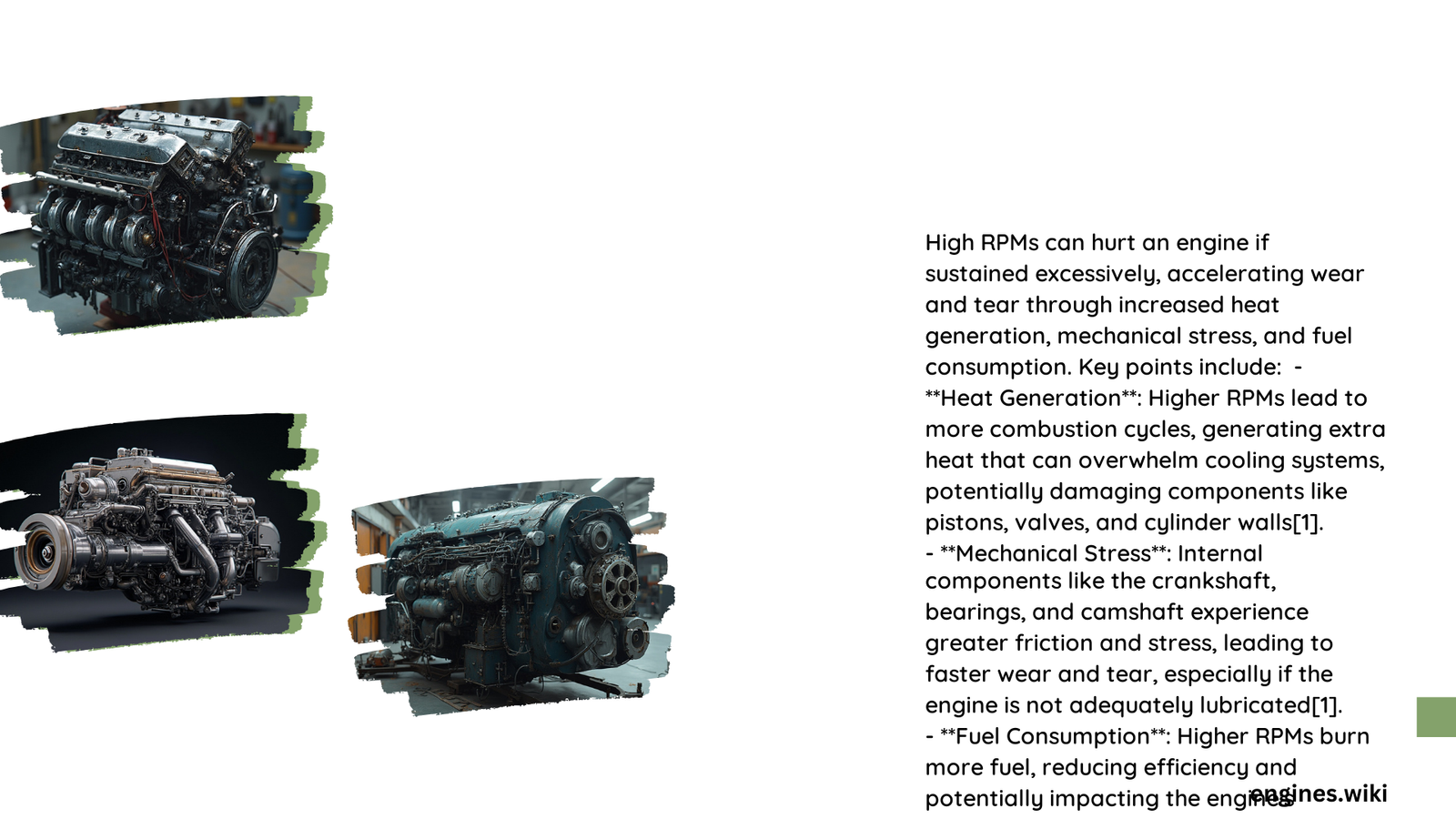High RPM operation can potentially hurt an engine, but the relationship is complex and depends on various factors. While excessive high RPM use can accelerate wear on engine components, moderate RPM ranges are generally safe for most engines. Factors such as engine design, load, lubrication, and maintenance play crucial roles in determining the impact of high RPM on engine health. This article explores the effects of high RPM on different engine types and components, providing insights into optimal operating ranges and potential costs associated with high RPM-related damage.
What Are the RPM Thresholds for Engine Wear?
The correlation between high RPM and engine wear is not straightforward. Different engines have varying thresholds at which wear becomes significant. Here are some key points to consider:
- Load and RPM Interaction: High RPM combined with high load increases wear more than high RPM alone.
- Engine Type Variations: Gasoline and diesel engines have different optimal RPM ranges.
- Lubrication Factor: Adequate lubrication can mitigate wear even at higher RPMs.
A study on marine low-speed engines revealed that wear rates are influenced by a combination of factors:
| Factor | Impact on Wear |
|---|---|
| Engine Load | High |
| RPM | Moderate |
| Cylinder Oil Feed Rate (COFR) | High |
For instance, if piston ring wear exceeds 40 µm/1000 working hours for the first ring, it indicates a need for increased lubrication rather than solely blaming high RPM.
How Does High RPM Affect Specific Engine Components?

High RPM operation can impact various engine components differently:
- Pistons and Piston Rings:
- Increased wear, especially under high loads
-
Wear rate can exceed 40 µm/1000 working hours in extreme cases
-
Bearings:
- Higher heat generation
-
Increased stress and potential for premature failure
-
Valves:
- Greater mechanical stress
-
Accelerated wear due to increased heat
-
Overall Engine:
- Higher energy expenditure
- Increased material fatigue
- Potential for accelerated wear if not properly managed
What Is the Optimal RPM Range for Different Engine Types?
Optimal RPM ranges vary depending on the engine type:
Gasoline Engines:
- Generally, 2,000-4,000 RPM is considered moderate
- Very low RPMs with high loads can cause ‘lugging’
- Consistent very high RPMs can lead to increased wear
Diesel Engines:
- Typically operate at lower RPM ranges
- Marine low-speed diesel engines can achieve 15,000-18,000 working hours between overhauls when operated within specified RPM and load ranges
What Are the Costs Associated with High RPM-Related Engine Damage?
Operating an engine consistently at high RPMs can lead to various costs:
- Repair and Replacement:
- More frequent parts replacement (e.g., piston rings, bearings)
-
Increased labor costs for repairs
-
Vehicle Longevity:
- Reduced overall engine lifespan
- Higher fuel consumption
-
More frequent maintenance requirements
-
Performance Degradation:
- Gradual loss of engine efficiency
- Potential for sudden failures if wear is not addressed
To mitigate these costs, consider:
– Regular oil analysis
– Adherence to manufacturer-recommended RPM ranges
– Proper maintenance schedules
How Can You Protect Your Engine from High RPM Damage?
To protect your engine from potential high RPM damage:
- Follow Manufacturer Guidelines: Adhere to recommended RPM ranges for your specific engine.
- Monitor Engine Load: Avoid combining high RPMs with high loads for extended periods.
- Maintain Proper Lubrication: Ensure regular oil changes and use the correct oil grade.
- Regular Maintenance: Schedule routine check-ups to catch wear issues early.
- Gradual Warm-Up: Allow your engine to warm up before operating at high RPMs.
- Avoid ‘Redlining’: Don’t push your engine to its maximum RPM regularly.
By understanding the relationship between high RPM and engine wear, and following these guidelines, you can help ensure your engine’s longevity and performance.
References:
1. MDPI – Possibility of Marine Low-Speed Engine Piston Ring Wear Prediction
2. Mechanics Industry – Wear Assessment Model for Cylinder Liner of Internal Combustion Engines
3. PistonHeads – Gearing and Engine Wear
